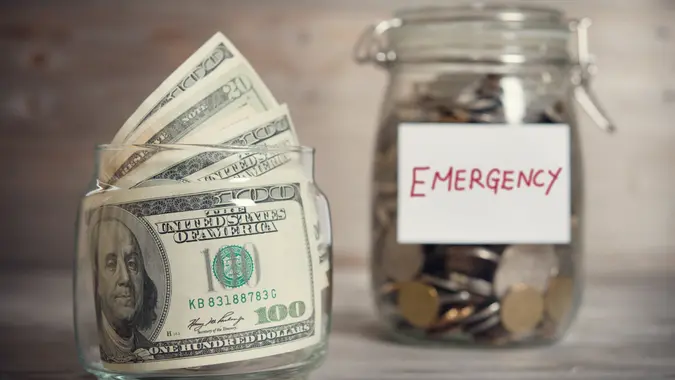5 Venmo Scams To Avoid in 2026 — and How To Stay Safe

Commitment to Our Readers
GOBankingRates' editorial team is committed to bringing you unbiased reviews and information. We use data-driven methodologies to evaluate financial products and services - our reviews and ratings are not influenced by advertisers. You can read more about our editorial guidelines and our products and services review methodology.

20 Years
Helping You Live Richer

Reviewed
by Experts

Trusted by
Millions of Readers
As convenient as apps like Venmo are, they’re not without risk. Research from Security.org found 83% of people who use Venmo, PayPal or similar payment apps experienced some sort of scam (or attempted scam) in 2024. This was a 15% increase from the year before.
So, what Venmo scams should you be on the lookout for in 2026? Find out how you can avoid getting scammed out of your money with the following advice from experts.
Overpayment Scam
A Venmo scam to watch out for is the classic overpayment scam. It already exists in 2025 and is likely to continue next year. Here’s how this scam works, according to Max Spivakovsky, Sr. Director of Global Payments Risk Management at Galileo Financial Technologies:
“Fraudsters send money via Venmo, claim it was an error, then pressure victims to send it back before the original payment bounces.”
Be particularly wary of any overpayment situation when the account or service requesting a refund is different from the original account. For example, say you’re paid by Zelle but asked to send money back to Venmo. This could very well be a scammer trying to get your money.
Account Takeover and Phishing Scams
With payment apps like Venmo, losing your account to a scammer is a very real concern. Cybercriminals can steal your passwords, usernames and other credentials to then get into your account and use it as they see fit. In many cases, they’ll purchase these data on the dark web.
Regardless of how they go about it, this is a scam that’s likely to become an even bigger problem going forward.
“We’re also seeing [an] increase in account takeover (ATO) activity across banks via multiple mechanisms,” said Spivakovsky. “Notoriously, the phishing attempts, abuse and credential stuffing are the one of the main drivers behind the increase.”
Prize Scams
Prize scams are where a payment app user is told they’ve won some kind of reward, lottery or sweepstakes, but must pay a fee (usually nominal) or taxes to get it. According to Security.org, an estimated 23% of payment app users are targets of these scams.
As per the Federal Trade Commission (FTC), legitimate prizes are free. If you have to pay or provide your private account information to get it, chances are you’ll lose any money — or the account itself — and get nothing in return.
Non-Delivery Scams
A non-delivery scam is where you pay for a specific good or service via the app, but it never arrives. Security.org data found that 18% of payment app users are targeted by these scams.
Authentication Code Scams
Whether it’s a bank or a payment app, if you’re asked to share a verification code, it’s a scam. As per Security.org data, around 11% of people who use payment apps like Venmo experience (or nearly experience) such a scam.
How To Avoid Getting Scammed
Venmo lets its users participate in peer-to-peer (P2P) lending. It’s convenient, but there are plenty of scams targeting these transactions. While any payment app can be hit by P2P-targeted scams, Venmo users may be among the most vulnerable.
“Where Venmo gives fraudsters a leg up over competing platforms is the social layer that’s built into the app,” said Diana Rothfuss, Global Solutions Strategy Director for Risk, Fraud & Compliance at SAS. “By default, users’ purchase or money transfer details post to a social feed, showing the sender and recipient, timestamp and a payment note, where users often describe in emojis or text what the transaction was for. This financial metadata is a goldmine for scammers.”
That’s why phishing scams, impersonation scams and fake buyer/seller scams are so prevalent on the app. If you’re trying to avoid getting scammed on Venmo or other payment apps, here’s what Rothfuss suggested:
- Check your Venmo privacy settings (and set all transactions to private by default).
- Verify all payment requests prior to sending funds.
- Be wary of urgent or emotional requests for payment.
- Don’t click links in emails or texts to send payment; instead, send money through the app directly.
Also, don’t send money or account information to people you don’t know, or through unsecured servers.
“If they are paying someone digitally whom they have never met before, consumers should take steps to verify the identity of the recipient, as in the case of a scam it is unlikely that they are who they purport to be,” said Al Pascual, CEO of Scamnetic.
 Written by
Written by  Edited by
Edited by 

























